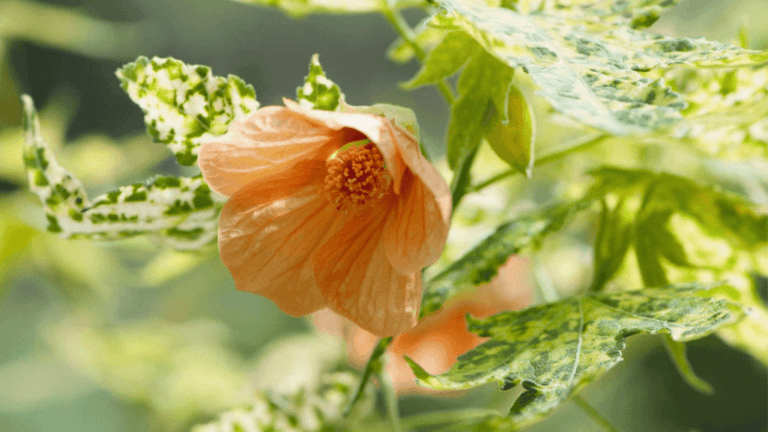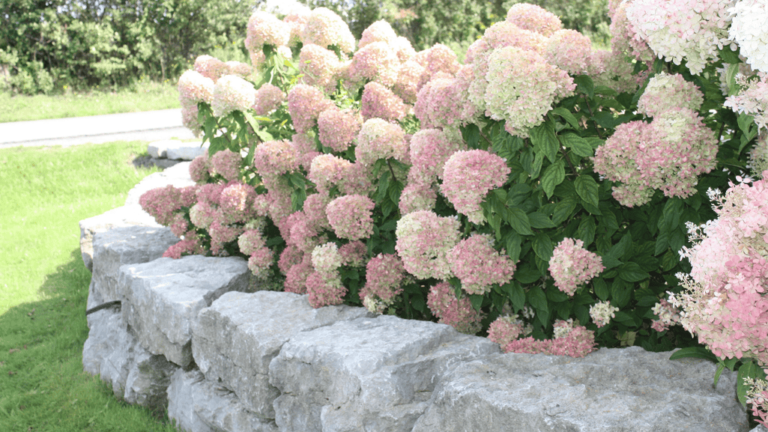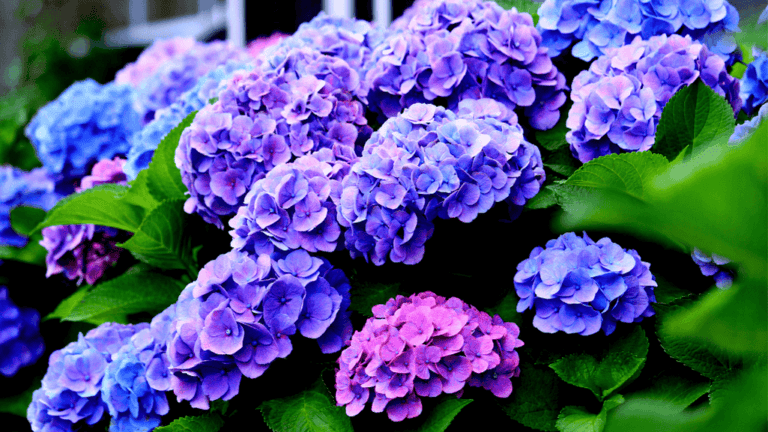Beautiful flowers gardenia Plants For Your homes

Make your home bright with the stunning Amaryllis, known for its vibrant blooms. These flowers add color to winter. They belong to the Amaryllidaceae family and are often mixed up with Hippeastrum. Amaryllis care is easy and rewarding, bringing nature’s beauty indoors during the cold months. This guide will show you how to plant these flowering bulbs for bright flowers every year.
Amaryllis bulbs are a great choice for gardeners and holiday decorators. They are affordable and last a long time. After 7 to 10 weeks, they come to life and bloom beautifully. With the right Amaryllis care, you can get many stems full of vibrant blooms.
Key Takeaways
- Larger Amaryllis bulbs (34/36 cm) can provide up to three stems with up to five flowers each.
- Planting Amaryllis bulbs should be spaced about an inch apart, if in clusters.
- A cool room (60-65°F) with bright, indirect light is ideal for Amaryllis growth and extended bloom life.
- Watering Amaryllis should be modest, no more than ¼ cup per week, to prevent bulb rot.
- After-bloom Amaryllis care is crucial, including a rest period in a cool location to encourage reblooming.
- Amaryllis can thrive when potbound and typically need repotting every 3-4 years.
- Being vigilant of pests and diseases like the narcissus bulb fly and red blotch fungus is necessary for healthy Amaryllis plants.
Understanding the Amaryllis Plant: An Overview
The Amaryllis family is known for its bright flowers and many types. At the heart of this group is the Amaryllis plant. It includes several species that attract gardeners and flower lovers.
The genus Amaryllis and its relative, Hippeastrum, are key members of this family. They look similar but are different in many ways. Amaryllis belladonna, part of the genus Amaryllis, comes from the Western Cape of South Africa. It’s famous for its beautiful pink flowers.
The Botanical Identity of Amaryllis
Amaryllis belladonna is known for its unique growth. It’s from South Africa and has big bulbs and tall stems with fragrant flowers. These features make Amaryllis belladonna a favorite in gardens and flower arrangements.
From South Africa to the Americas: The Geographical Spread
Hippeastrum is found in a wide area, from Mexico to Argentina, and the Caribbean. It has about 90 species. This range means there are many Amaryllis varieties to choose from, each loved for its big, beautiful flowers.
In gardens and homes, Hippeastrum and other Amaryllis family members are valued for their beauty and ability to thrive in different places. Their large, stunning flowers make them perfect for indoor plants during holidays.
Knowing the differences between Amaryllis and Hippeastrum is key for anyone wanting to add these plants to their garden or indoor space. Both are popular for their large, beautiful flowers. So, both new and experienced gardeners look for different Amaryllis varieties to add to their collections.
Essential Tips for Planting Amaryllis Bulbs
Starting a garden with planting Amaryllis bulbs is a great move. These bulbs are famous for their big, bright flowers. They bring color to any garden. To make sure your Amaryllis does well, you need to prepare right.
Choosing the Right Pot and Soil
Choosing the right pot is key when potting Amaryllis. Pick a pot that matches the bulb’s size, usually 5 to 7 inches wide. The pot should support the bulb’s weight and have good drainage to avoid waterlogging. Use a mix of rich, sandy loam or well-draining soil for the best results.
The Optimal Depth for Planting Amaryllis Bulbs
How deep you plant Amaryllis bulbs matters for their flowers. Keep the top one-third of the bulb above the soil to prevent rot. The rest should be snug in the soil, ready to support the plant as it grows. Keep the soil a bit moist at first, but don’t overwater.
When to plant Amaryllis bulbs is important for their growth. The best time is between October and April. This sets them up for a beautiful show from late December to June. If you want them for Christmas, plant them after Halloween and keep them at 68 to 70 degrees F.
After the flowers are gone, taking good care of Amaryllis bulbs helps them bloom again. Store them in a cool, dark place, between 40-50 degrees F. This rest period is key for them to get ready for next year’s blooms.
Follow these tips and take good care of your Amaryllis for many seasons of beautiful flowers. Each flower stalk can have up to six blooms, making it a great choice for your garden.
Cultivating Amaryllis Indoors for Winter Blooms
To get beautiful winter blooms of Amaryllis indoors, make your home like a tropical place. This helps them grow and bloom well during the cold months. Here’s how to make your home perfect for these plants.
Mimicking Tropical Conditions at Home
Make your home warm and moist like a tropical area to keep indoor flowering plants looking great all winter. Keep the room between 70-80°F and the air humid. You can use pebble trays with water or a humidifier to keep the air moist.
Indirect Light and Temperature Control
Amaryllis love bright light but not direct sunlight. Put them where they get light but not too much sun. This keeps their leaves and flowers safe from damage.
Change the plant’s position often to make sure it grows evenly. This helps them grow straight and strong.
| Aspect | Details |
|---|---|
| Optimal Indoor Temperature | 70-80°F |
| Recommended Pot Size | 6-7” for individual bulbs, larger containers for multiple |
| Watering Schedule | Begin when the top inch of soil feels dry; critical before the stem reaches 3-4 inches |
| Light Requirements | Bright, indirect light |
| Humidity Enhancement | Use pebble water trays or a room humidifier |
By carefully controlling these factors, you help your Amaryllis winter care. This makes sure they do well indoors during winter. With the right care and patience, you’ll enjoy beautiful flowers that brighten up your home.
Amaryllis
Discover the beauty of the Amaryllis, especially the Ambiance variety, for adding life to your holiday decor. Its vibrant flowers are perfect for the festive season.
Amaryllis bulbs grow big, about 32-34cm, and do well inside. They bloom in 12 weeks, making them a great choice for indoor plants. You can buy them for $14 for a few or $11 for 30 or more, making them affordable for brightening your home in winter.
To grow these bulbs, chill them in the fridge for 6 to 12 weeks. This cold treatment helps them grow better.
These plants love USDA Zones 8b to 10b and can grow 20-30 inches tall. They do best indoors, often blooming by Christmas if started in late October.
Amaryllis not only looks great but is also tough. It’s deer-resistant and rarely gets sick. It fights off diseases like mosaic virus and bulb rots, keeping its beauty intact.
After they bloom, store the bulbs in a cool, dark spot. Keep them at 50-60 degrees for 8 to 12 weeks. This helps them stay strong for next year or if you’re planting them for the first time.
To make the most of Amaryllis, feed them special fertilizers. Use ones low in nitrogen, like a 5-10-10 or 6-12-12 mix. This helps them grow strong and support their big flowers.
With over 90 species and many hybrids, the Ambiance Amaryllis is perfect for the holidays. It’s easy to care for, making it great for both gardeners and indoor plant lovers.
Caring for Amaryllis Throughout the Seasons
The Amaryllis bulbs annual flowering cycle depends a lot on how we care for them in each season. They can bloom year after year if we take good care of them. This part will cover the Amaryllis seasonal care to help them reach their best potential.
In the warmer months, we focus on making the plant strong and healthy. This helps them bloom better. As the seasons change, we prepare the plant for rest, known as Amaryllis dormancy. This rest is key for the next cycle of flowers.
Amaryllis Care routine in Spring and Summer
In spring, move Amaryllis outside if it’s safe, so they can get lots of sunlight. Plants in places like Fort do well in the sun and high humidity. This makes them healthy and their flowers bright. Watering and feeding them well helps their leaves grow strong. This is important for storing energy for flowers.
Prepping Your Amaryllis for Dormancy in Autumn and Winter
As autumn comes, start cutting back on water to help the plant sleep. This change should be slow, as Amaryllis needs time to adjust. A cool, dark spot is perfect for their sleep, which should last 6 to 8 weeks. After that, bring them back to a warm place indoors to wake them up and get ready for more flowers.
| Season | Care Instructions | Expected Outcome |
|---|---|---|
| Spring & Summer | Regular watering and fertilization, exposure to ample sunlight. | Vibrant growth and energy accumulation for blooms. |
| Autumn & Winter | Reduce watering, move to a cool, dark place for dormancy. | Rest period initiates, preparing for next bloom cycle. |
Knowing how to care for your Amaryllis through the seasons is key. It helps them live longer, up to 25 years. By following these steps, your Amaryllis will be a highlight of your garden year after year.
Illuminating Amaryllis Varieties and Their Unique Charm
Exploring the world of Amaryllis varieties shows us a wide range of Amaryllis colors and shapes. Each type adds its own special touch, making Amaryllis popular with gardeners and flower lovers.
Vibrant Colors and Striking Patterns
Amaryllis flowers come in a variety of colors, from deep reds to soft whites. For example, the ‘Apple Blossom’ type has white petals with a touch of pink. ‘Desire’ stands out with its bright orange petals. Each flower’s color and pattern highlights its beauty, making it interesting all year.
Understanding Single and Double Flowering Variants
Single flowering Amaryllis plants have big, eye-catching flowers. Double flowering Amaryllis types have many petals, thanks to careful breeding. These doubles look lush and add luxury to gardens and homes.
Learn more about these beautiful flowers in our guide at Amaryllis varieties.
| Product | Discount Rate | Original Price | Discounted Price |
|---|---|---|---|
| ENCHANTED BLOOMS POTTED BULB GARDEN | 65% | $112.95 | $39.53 |
| MOTHER’S ANGEL POTTED BULB GARDEN | 67.5% | $112.95 | $36.73 |
| WINTER FOREST AMARYLLIS DUO | N/A | N/A | $39.42 |
Whether you like the simple beauty of single flowering Amaryllis or the rich look of double flowering Amaryllis, these flowers can brighten any space. With the right care, these bulbs will grow and fill your space with their stunning blooms.
Combating Common Pests and Diseases in Amaryllis
Keeping Amaryllis plants healthy means paying close attention to Amaryllis pest control and Amaryllis diseases. This helps keep your flowers looking great and stops bad conditions from spreading to other plants.
It’s important to spot and deal with problems like mealybugs and red blotch disease early. Mealybugs treatment starts with finding the white, cotton-like pests on the plants. Use alcohol-soaked cotton swabs or insecticidal soap right away to stop them from spreading. Also, using Amaryllis pest control methods like neem oil can help keep pests away in the future.
Identifying and Treating Mealybugs
Checking your plants often helps catch mealybugs early. Look closely at the hidden spots where pests like to hide. A good treatment plan includes using safe insecticidal soaps or a homemade mix of alcohol and water. This helps get rid of the pests without hurting your plant.
Prevention and Management of Red Blotch Disease
Red blotch Amaryllis shows as red spots on leaves and stems, hurting the plant’s health and blooms. To prevent it, make sure the air moves well and don’t water the leaves. Water at the base instead, and give the plant enough sunlight and air to fight the disease.
Here are key steps for handling Amaryllis diseases:
- Sanitation: Clean up dead or infected plant parts to stop diseases from spreading.
- Cultural Practices: Improve soil drainage and don’t crowd the plants together.
- Fungicidal Applications: Use fungicides safe for Amaryllis or similar plants.
For more tips on keeping Amaryllis safe from pests and diseases, check out our guide at Flowers Gardenia Contact Page.
| Disease | Impact on Plant | Prevention Strategy |
|---|---|---|
| Mealybugs | Stunts growth by sucking sap | Use insecticidal soap, maintain dry conditions |
| Red Blotch | Red patches, reduced flowering | Avoid wetting foliage, good air circulation |
| Southern Blight | Rots bulbs, irreversible damage | Avoid replanting in infected soil, use clean tools |
For more info and updates on Amaryllis health, check our blog and newsletters regularly. With the right care, your Amaryllis can be strong and beautiful.
Encouraging Reblooming in Amaryllis Plants
Learning about Amaryllis reblooming is key for those who want to see blooms every year. Proper post-bloom care and a well-planned Amaryllis rest period are vital for sustainable Amaryllis care. This starts right after the flowers fade, leading to another blooming season.
Post-Bloom Care for Sustained Beauty
Good post-bloom care is crucial for the Amaryllis’s next bloom. After the flowers fade, cut off the blooms but keep the stalk until it dries. In summer, move the bulb outside to fertile soil with morning sun and afternoon shade.
Keep it safe from pests like slugs and snails. Feed it liquid fertilizer every six weeks and keep the soil moist. These steps help with strong growth and more blooms.
The Importance of Rest Period in Amaryllis Reblooming
The Amaryllis rest period is key for the plant’s growth, happening in late summer and early fall. This time helps the bulb rest for 8-10 weeks in a cool, dark spot. After, re-pot the bulb in fresh soil in a place with indirect light.
This sets the stage for new growth and reblooming in 7 to 10 weeks.
| Care Stage | Actions | Benefits |
|---|---|---|
| Post-Bloom | Cut off faded flowers; gradual sun exposure | Redirects energy to the bulb |
| Summer Growth | Outdoor planting; pest protection; regular fertilizing | Promotes bulb health and bloom potential |
| Rest Period | Store in a cool, dark location; pause watering | Facilitates dormancy and reblooming |
By following these steps and knowing the importance of each phase, your Amaryllis can thrive and bloom again. For more tips on Amaryllis care, check out this article by Ken Johnson from the University of Illinois.
Maximizing Amaryllis Blooms with Proper Fertilization
Fertilizing Amaryllis plants is key to getting beautiful blooms. Knowing what nutrients they need and when to feed them can make a big difference. Experts say a balanced fertilizer with lots of phosphorus helps maximizing Amaryllis blooms.
For the best bulb care, fertilize slowly and steadily. Slow-release fertilizers work great because they feed the plant over time. This way, you avoid giving too much food, which can harm the plant.
Start fertilizing in late winter or early spring, when the plant starts growing. This helps the Amaryllis go from budding to blooming beautifully. During this time, plant nutrients are key for healthy leaves and lots of flowers.
When you put granular fertilizer on, be careful not to touch the bulb or leaves. Spread it on the soil around the base. For extra nutrients, foliar sprays work well, but use them when it’s cool to protect the leaves.
Watch out for signs of too much fertilizer, like yellow leaves or a white crust on the soil. If you see these, stop fertilizing and wash the soil to get rid of any extra nutrients.
By following these steps, you’ll not only get more beautiful Amaryllis flowers but also keep your plants healthy and happy. This way, they can be the star of your garden for years to come.
Conclusion
The Amaryllis flower’s journey from South Africa to being a symbol of strength and beauty is fascinating. With the right care, enthusiasts can enjoy its vibrant flowers. These flowers grow tall and display a range of colors.
Since the 18th century, experts have known the importance of proper care. This includes using the right pot size and providing bright, indirect light. It’s also crucial to avoid overwatering to prevent bulb rot. Cutting the flowers after they bloom helps keep the plant looking great for weeks.
Every tip, from choosing the right soil to fighting pests, helps grow beautiful Amaryllis flowers. With patience and the right care, these flowers can brighten any space. They remind us of nature’s beauty and the rewards of caring for plants.






















